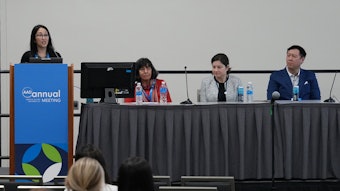New cancer drugs can cause severe skin reactions
Rising cases may be coming to your practice.

With the growing number of targeted and immunologic cancer therapies available, you are likely to see more patients being treated for cancer in your practice and the cutaneous side effects that result.
The cancer treatment landscape is rapidly evolving. With new cancer therapies, including small molecule inhibitors and immune therapies, approved by the FDA or in clinical trials, more oncology drugs are available and used in combination. The patient population taking advantage of these therapies is growing. That’s the good news. Yet, it’s important to be aware that these new and emerging cancer treatments can produce cutaneous reactions. These new oncology drugs are being approved for more and different cancer types and being prescribed in combination.
The March 10 session, U056 – Update on Cutaneous Reactions to Targeted and Immune Cancer Therapy, led by Anisha B. Patel, MD, FAAD, associate professor of dermatology at the University of Texas MD Anderson Cancer Center and the UT Health Science Center in Houston, gave an overview of the cutaneous toxicities dermatologists may expect to see with different mechanisms of cancer therapy, and the best practices for managing these skin reactions in patients undergoing cancer treatment.
“Many of the molecules being targeted in cancer therapy are also expressed in the skin,” Dr. Patel said. “We’re seeing more side effects in the skin compared to any other organ system. A cancer drug that was causing a rash in patients with melanoma is now causing a rash in patients with neurofibromatosis and renal-cell cancer. More dermatologists will be seeing these patients in their offices and the side effects, especially when the drugs are combined, can be difficult to treat.”
Good for cancer, tough on skin
For example, epidermal growth factor receptor (EGFR) inhibitors, a drug class used to treat several common malignancies, including breast, colon, lung, and pancreatic cancer, combined with immune therapies or other targeted inhibitors, and the immune checkpoint inhibitors, can cause an acne-like eruption.
“We started treating this more aggressively early in patients with combined therapies using dupilumab, which is FDA-approved for atopic dermatitis, with good results,” Dr. Patel said.
Rash decisions
To reduce rashes resulting from immune checkpoint inhibitors, which block checkpoint proteins from binding with their partner proteins to ultimately allow T-cells to obliterate cancer cells, Dr. Patel and her team at the University of Texas MD Anderson Cancer Center are now relying on biologic therapies.
“We go straight from topical steroids, skipping the more general immunomodulators, to biologics, such as dupilumab for drug-induced eczema and risankizumab for drug-induced psoriasis.”
A team approach
Dermatologists can play an important role in the cancer care team with these emerging drugs, and Dr. Patel said it’s important for various members of a patient’s care team to communicate with dermatologists so that they can be aware of these potential skin toxicities.
“Managing them quickly and efficiently is not just good for patients’ skin health, but for their overall health because it can allow patients to stay on their cancer therapy longer,” Dr. Patel said. “We don’t want people stopping chemotherapy because they had a severe rash.”











